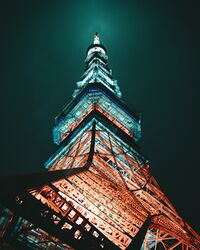Maimedo: Difference between revisions
No edit summary |
No edit summary |
||
| Line 184: | Line 184: | ||
! <small>[[Esonian language|Esonian]]</small> || <small>Transcription</small> || <small>Translation</small> | ! <small>[[Esonian language|Esonian]]</small> || <small>Transcription</small> || <small>Translation</small> | ||
|- | |- | ||
|[[Maimedo#Government| | |[[Maimedo#Government|Nakajima]] | ||
|中島区 || Nakajima-wu || Nakajima Ward || 112,598 | |中島区 || Nakajima-wu || Nakajima Ward || 112,598 | ||
|- | |- | ||
Revision as of 14:15, 23 June 2023
This article is incomplete because it is pending further input from participants, or it is a work-in-progress by one author. Please comment on this article's talk page to share your input, comments and questions. Note: To contribute to this article, you may need to seek help from the author(s) of this page. |
Maimedo
橙水 | |
|---|---|
| City of Maimedo | |
 Clockwise from top:
| |
| Nickname(s): Maikyo, Maishi, Orange City | |
| Country | |
| Province | Kinkai-koku |
| County | Maimedo-gun |
| Municipal | Maimedo-wu |
| Local | wards of Maimedo |
| Government | |
| • Body | City Government of Maimedo |
| Area | |
| • Capital | 736.4 km2 km2 (284.32 sq mi) |
| Population (2022) | |
| • Capital | 992,351 |
| • Rank | 1st in Esonice |
| • Density | 1,300/km2 (3,500/sq mi) |
| • Metro | 3,129,121 |
| • Total | 4,121,472 |
| Demonym | Maimedoite |
| Time zone | UTC-8 |
| Post Code | ES-132 |
| Flower | Silky wisteria |
| Food | Sushi donut |
| Tree | Bellflower cherry |
Maimedo (maɪmɛdəʊ; Esonian: 橙水, maimɛdɔ), also semi-officially known as Maikyo (maɪkiəʊ; Esonian: 橙京, maikʲoː), officially the Capital City of Maimedo is the national capital and largest city in Esonice with an estimated population of 992,351. The metropolitan area which includes an estimated population of 3,129,121 brings the greater city’s metropolitan population to 4,121,472 inhabitants. For nearly a millennia since the 12th century, Maimedo was and continues to be Esonice’s beating political and cultural heart. It’s a centre of traditional and modern Esonian fashion, cuisine, literature and art. It’s also an important centre of finance and commerce in the nation. Because of its many orange terracotta and clay tile ladenned roofs including copper coloured limestone buildings, Maimedo became known in Esonian poetic literature as the “Orange City”, hence its nickname.
Maimedo is tied with Marusonya on the highest standard of living in Esonice, however it's beaten by Marusonya in quality of life, coming in second though still closely behind.
Etymology
WIP
History
Origins
12th and 19th centuries
Decay and destruction
Contemporary period
Geography
WIP
Government
WIP
Wards
Nakagusa is the administrative centre of Maimedo.
| name | Full name | Population | ||
|---|---|---|---|---|
| Esonian | Transcription | Translation | ||
| Nakajima | 中島区 | Nakajima-wu | Nakajima Ward | 112,598 |
| Ēnami | 桜並区 | Ēnami-wu | Ēnami Ward | 83,399 |
| Seian | 静苑区 | Seian-wu | Seian Ward | 103,426 |
| Tomohashi | 友橋区 | Tomohashi-wu | Tomohashi Ward | 136,577 |
| Harajuku | 原宿区 | Harajuku-wu | Harajuku Ward | 81,364 |
| Nishido | 西門区 | Nishido-wu | Nishido Ward | 101,792 |
| Ōtō | 大藤区 | Ōtō-wu | Ōtō Ward | 52,975 |
| Chiyoshi | 千吉区 | Chiyoshi-wu | Chiyoshi Ward | 78,191 |
| Hinashido | 東門区 | Hinashido-wu | Hinashido Ward | 94,623 |
| Nada | 望区 | Nada-wu | Nada Ward | 57,728 |
| Katsuda | 黑田区 | Katsuda-wu | Katsuda Ward | 89,678 |
Cityscape
Urbanism and architecture
WIP
Green spaces
WIP
Transport
Trams
Economy
Tourism
Education
WIP
Culture
Art and galleries
Liturature
Local folklore
Local festivals
Cuisine
Sport
Demographics
Religion
Maimedo has 21 Buddhist temples and 127 Shinshi shrines
Minority communities
International relations
WIP
Twin towns - sister cities - partnerships
WIP







